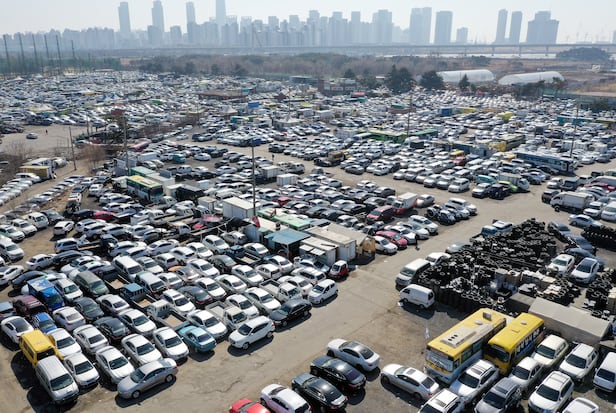
South Korea’s used car export market is accelerating rapidly, with annual volume reaching 7 trillion won ($5 billion) and continuing to gain ground. Traditionally led by small and medium-sized enterprises (SMEs), the industry is hitting new highs as a result of several favorable external conditions, including a strong U.S. dollar, rising global recognition of Korean automotive brands, and ongoing geopolitical uncertainty. An expanding global perception that Korean vehicles offer strong value for money is further propelling used car exports beyond the domestic market.
According to the Ministry of SMEs and Startups on May 6, South Korean SMEs exported $5.089 billion worth of vehicles in 2024. At an exchange rate of 1,400 won to the dollar, that amounts to approximately 7.12 trillion won—nearly three times the $1.8 billion recorded in 2018. The growth has been especially sharp since 2021, when used vehicle exports surged from $1.837 billion in 2020 to over $4.9 billion in 2023.
“Over 90 percent of used car exports are handled by small businesses, and some projections suggest the market could expand to 8 to 9 trillion won this year,” said Shin Hyun-do, head of the Korea Used Car Distribution Research Institute.
The outlook remains strong. According to the Incheon Port Authority (IPA), 166,000 used vehicles were shipped through Incheon Port in the first quarter of 2025 alone, a 52 percent increase from the 109,000 units exported during the same period in 2024. The IPA projects annual exports to reach between 600,000 and 650,000 vehicles, far surpassing the previous record of 500,000 units set last year.
With Incheon Port handling the majority of the country’s used car shipments, the rapid growth is starting to strain capacity. “The spike in used car exports is causing port congestion and a shortage of container terminals,” said Kim Sung-tae, head of port operations at the Incheon Port Authority.
The export boom is also driving up global demand for Korean auto parts. Global e-commerce platform eBay reported that auto parts were the top-selling category among South Korean sellers in 2024. “As Korean cars gain traction in global markets and vehicle owners in countries like the United States embrace DIY repairs, demand for Korean-made parts has surged,” an eBay spokesperson said.
Industry analysts cite strengthened brand competitiveness as a key factor behind the trend. Alongside favorable pricing, the availability of replacement parts and ease of repairs have made Korean vehicles more appealing in international markets.
Most of the exported used vehicles are domestically manufactured sedans and recreational vehicles (RVs) with engine displacements between 1,500cc and 3,000cc. Top-selling models include the Hyundai Sonata and Avante, the Kia K5 and K3, along with SUVs such as the Hyundai Tucson and Santa Fe and the Kia Sportage and Sorento. In regions such as Africa and the Middle East, one-ton trucks like the Hyundai Porter II and Kia Bongo III are especially popular.
The depreciation of the South Korean won has also strengthened the market. As the won weakens against the dollar, Korean exports become more affordable for overseas buyers, enhancing price competitiveness. Exporters, in turn, benefit from improved profitability by earning more won per dollar.
Stabilized international shipping rates since 2022 have also alleviated pressure on container logistics, supporting further growth. Additionally, an increase in new car deliveries—following the easing of the global semiconductor shortage—has shortened the trade-in cycle, expanding the supply of late-model used cars eligible for export.


